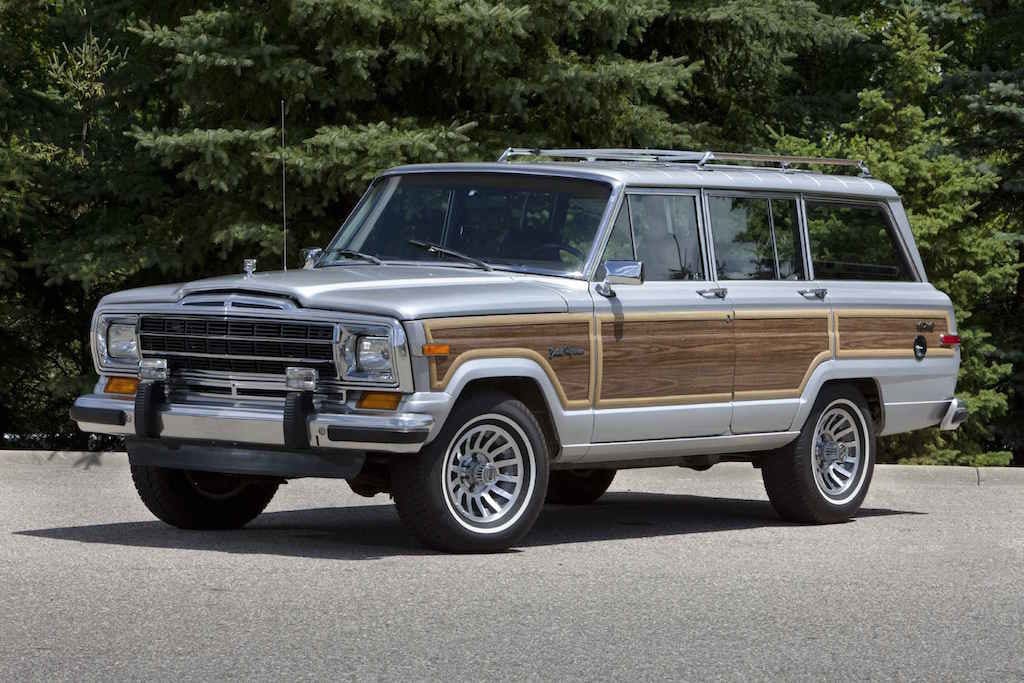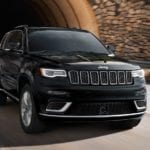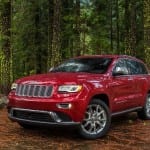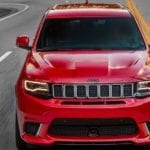The Jeep Grand Wagoneer hasn’t been around since 1991, but the luxury SUV is seeing an unexpected boom in popularity. There are a number of can enthusiasts out there who revolve their business around restoring the Grand Wagoneers, and none of these business owners are struggling for customers. With the anticipated rerelease of the vehicle in 2018, the iconic vehicle will see another jump in recognition.
If you happen to be in the market for used Jeeps, you might be inclined to opt for the most popular Jeep on the used car market…
Introduced in 1963, the Jeep Wagoner was the first luxury 4×4 on the market, and based on advertisements, it was the first automobile to be referred to as a “sport utility vehicle.” Essentially a replacement for the Willys Jeep Station Wagon, the unique vehicle stayed on the market for nearly 30 years. Known for the pickup truck chassis and box-like body, the Wagoneer separated itself from it’s competitors (including vehicles from General Motors and Land Rover) by fully embracing the ‘luxury’ element.
In 1984, the brand replaced their ‘Limited’ with the ‘Grand Wagoneer.’ Admired for, as Brett Berk of Bloomberg.com explained, it’s “plush leather, thick carpeting, cushy ride, fancy stereo, and power-operated everything,” the family car soon became a favorite across the United States. As the writer says, the vehicle could easily be interpreted as a commuter car, as the box-like vehicle drove a lot more like a sedan than the fellow Jeeps. However, it still possessed the power and capabilities of those vehicles, and the all-wheel drive could drive through the worst terrains and conditions.
The Grand Wagoneer saw a number of changes during its seven years on the market, but a number of standard features stayed consistent. These included 15-inch all-season radial tires and alloy wheels, an updated audio system featuring an AM/FM radio, cassette player, and four AccuSound by Jansen premium speakers (boy, have times changed), leather steering wheel and seating surfaces, a digital quartz dashboard clock, chrome front grille, power windows and doors, and dual-note high-low pitch horn.
Considering the Grand Wagoneer was regarded as the “gold standard of the SUV market,” Chrysler kept the vehicle mostly intact following their purchase of American Motors in 1987. The company even retained the carbureted AMC V8 engine instead of transitioning into their more innovative fuel-injected V8.
Many Wagoneer enthusiasts are particularly enthralled by the “Final Series” models, which spanned from 1989 through 1991. These SUVs included a revamped wood siding, more modern aluminum wheels, and a number of fixes (including patching up the air conditioning compressor that was prone to leaks). Other updates included rear wipers, an interior overhead console (featuring brighter map , outside temperature sensor, and compass lights), and infrared remote-controlled keyless entry technology. There was also an assortment of new colors, including ‘hunter green metallic,’ which was the color of the final Grand Wagoneer ever produced in June of 1991. By the final year of the vehicle’s production, the SUV was considered the longest domestically produced vehicle on the same platform.
Why the Jeep Grand Wagoneer? Berk attributes the fascination to contemporary collectors, those who are constantly looking to acquire a dated and potential antique. The Grand Wagoneer would be right up their ally, as the writer believes the “signature fake-wood paneling along its flanks—harking back to a time when big wagons had real wood bodies—is also evocative of a sentimental, but honest all-American past.” Either way, these enthusiasts have to be drawn to the car’s box-like body and fancy interior, as Berk says the unreliable engine was a key issue with the Grand Wagoneers.
“Most of it is nostalgia. It delivers warm, fuzzy feelings,” Chip Miller, the owner of Wagonmaster, a shop that focuses on refurbishing solely “low-mileage vintage” Grand Wagoneers, told Berk. “Great times at the beach, at the lake, at the ski place at the mountains, at fishing trips with dad.”
It’s not just the Grand Wagoneer that’s seen a recent uptick in popularity, it’s the vintage truck market in general, which Berk says has been the “fastest-growing segment of the collectible vehicle market.” This was evident by Miller’s sales, as the car dealer claimed he didn’t sell his first $20,000-plus vehicle until 2000. In 2010, the average price of his car’s jumped to $30,000, and he sold his Jeeps for a bit over $50,000 in 2014. Rival Wagoneer restorers have been known to charge upwards of $70,000! Hagerty, classic-vehicle insurance experts, says average prices for the vehicle have increased 35-percent over the past five years.
“It has always been a bit of a preppy vehicle, at least as far as your part of the world, the Northeast, is concerned,” said Miller. “When you get down here in our part of the world, it was a great ranch vehicle, to be able to drive around the ranch, and then still get on the highway and get into town, so we used them in agriculture.”
Unsurprisingly, it’s the beach, the lake, and the ski places where you will most often see these throwback luxury vehicles. After all, there was once a time when the SUV was reserved for those with more cash to spend, as Berk notes that 58-percent of the car’s buyers were college-educated and has a median income of $98,200 (which would have topped the list among car buyers in 1990).
“Strongholds,” Miller referred to these key locations as. “Long Island, Nantucket, Martha’s Vineyard, Cape Cod, upstate New York. The ski areas of Colorado, Aspen and Vail. Sun Valley, Idaho.”
If you thought these vehicles were popular now, just wait until 2018, when Jeep will be producing a “three-row version of its’ full-size Jeep.” Originally announced at the North American International Auto Show in 2011, Chrysler was planning an “upper-scale” seven-seat SUV. The new Wagoneer was thought to be replacing the Dodge Durango, but the vehicle will instead by slotting into the spot previously held by the since-discontinued Jeep Commander. The new Grand Wagoneer will actually be sold alongside the Durango and the Jeep Grand Cherokee. The writer believes the updated nameplate will only help raise the vehicle’s popularity and price.
“I have no doubt in my mind that it will not damage the market value of the old original,” Miller says. “In fact, if anything, it may well shoot it through the roof. Our take, me and a lot of the other classic Jeep guys, is bring it on.”
What does Miller believe would be a key to an updated version of the Grand Wagoneer?
“There very well could be a model that would have wood grain on it,” Miller says. “And if it did, I think it would do well. I have people that contact me and ask, ‘If I sent you my Escalade, would you consider putting wood grain on it?’ Of course, I don’t do that. But it evokes something that some people just love. They love it.”
The Grand Wagoneer has obviously lived on as a result of it’s fans, as these enthusiasts have made sure the SUV has remained just as popular (if not more so). It also lives on in other SUVS, as Land Rover used the luxury vehicle to inspire their Range Rover.
Regardless, we can appreciate that the Grand Wagoneers will continue to ride the road for the foreseeable future.








